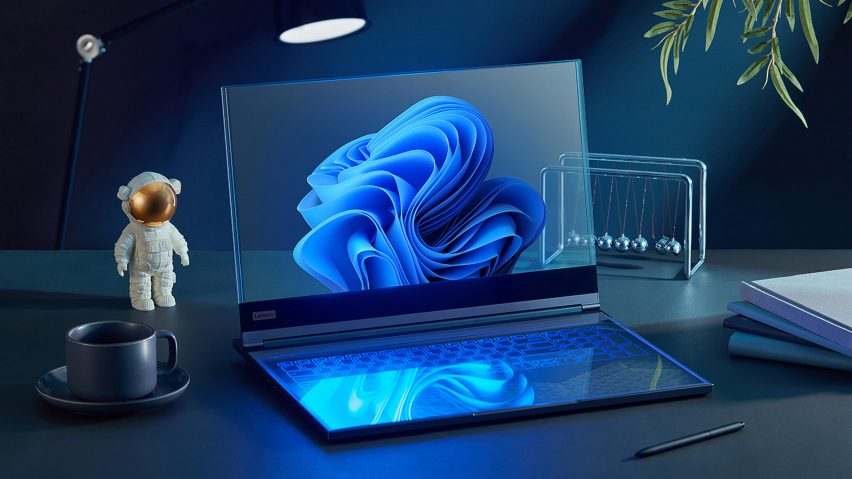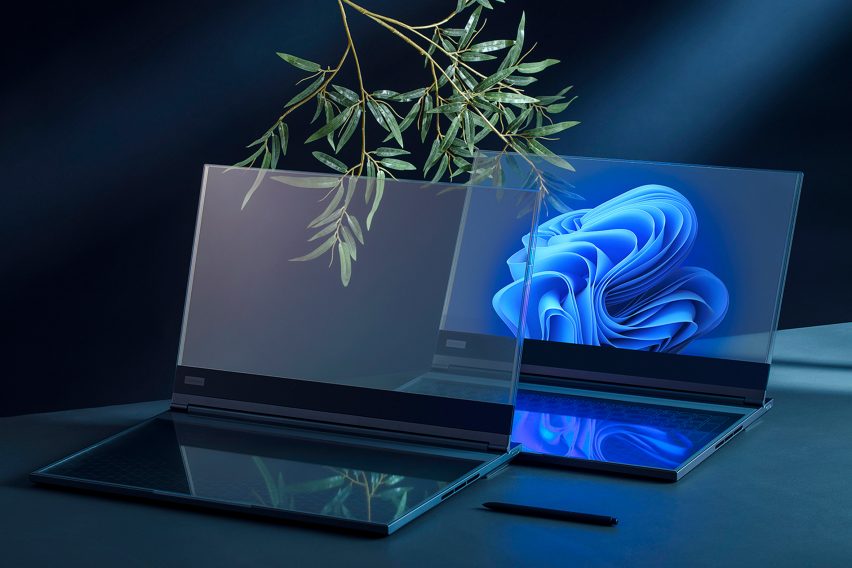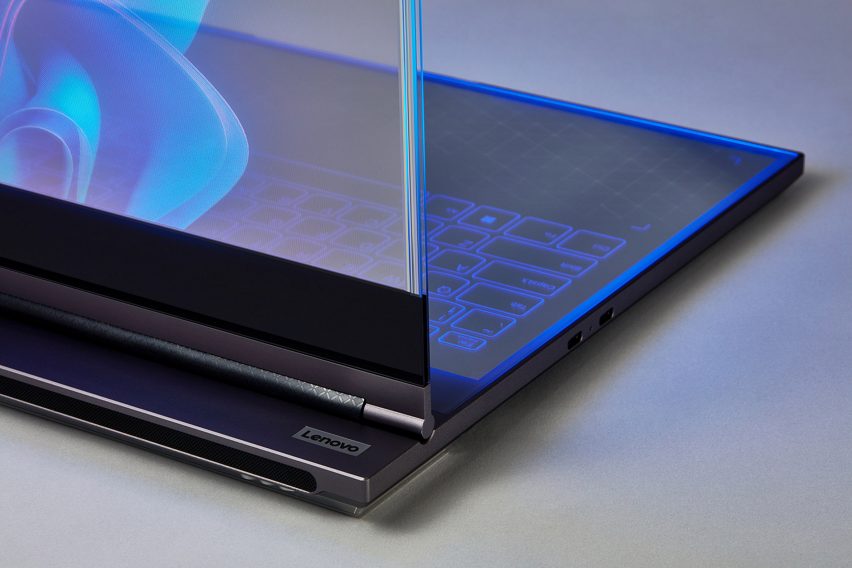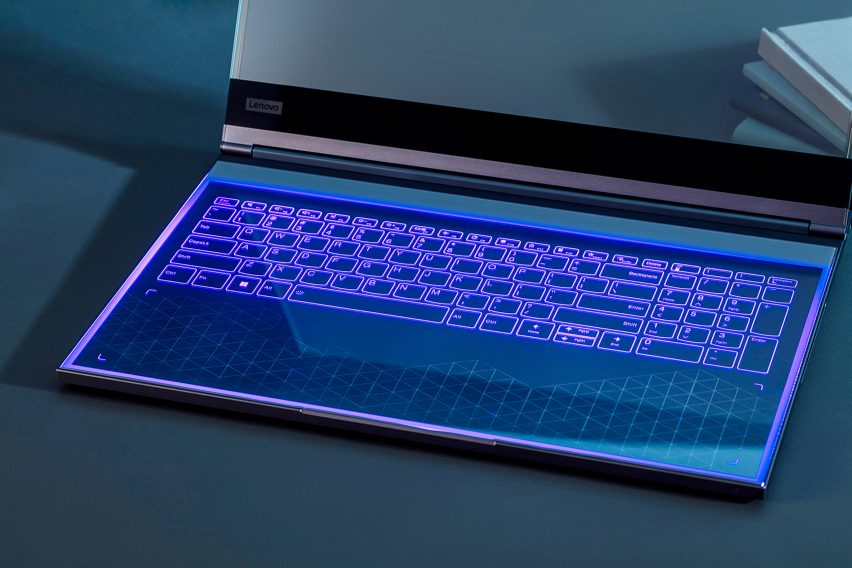
Lenovo reveals "industry's first" laptop with transparent display
At the Mobile World Congress in Barcelona, electronics brand Lenovo has unveiled a laptop concept with a transparent screen that allows users to see through the device.
Lenovo describes the ThinkBook Transparent Display Laptop Concept – also referred to as Project Crystal – as "the industry's first laptop with a 17.3-inch Micro-LED transparent display".

The proof-of-concept device features a display with adjustable transparency and a detachable see-through base that can be used as a keyboard or tablet.
Instead of physical buttons, keys are projected onto this smooth, flat surface of nano-optical glass.
Lenovo's transparent laptop is so futuristic 🤩 pic.twitter.com/84t25KDnWw
— Ben Geskin (@BenGeskin) February 26, 2024
The proof-of-concept was unveiled at the Mobile World Congress in Barcelona
Bringing a stylus close to the keyboard causes the keys to disappear so it can be used for drawing. Artists and designers can sketch directly onto the surface and see their creations appear on the screen.
The laptop's chassis also incorporates a rear-facing camera that allows the device to recognise and interact with objects placed behind it using generative artificial intelligence (AI) and augmented reality (AR) software.

At the Mobile World Congress (MCW) trade show, Lenovo demonstrated these AR capabilities by placing a flower in a vase behind the screen and having a virtual butterfly fly around it.
The technology could allow digital artists to view what is directly behind the laptop while sketching on the drawing pad with a dedicated stylus while interior designers could overlay virtual furniture or decor on top of an existing space.
"The transparent screen opens up new avenues of work collaboration and efficiency by enabling the interaction with physical objects and overlaying digital information to create unique user-generated content," Lenovo said.
The concept is Lenovo's first foray into the world of transparent displays, which several companies have so far used for televisions.
Chinese electronics firm Xiaomi unveiled a see-through TV with an edge-to-edge transparent display in 2020, while LG's Signature OLED T was a standout at this year's Consumer Electronics Show.
The Project Crystal display features MicroLED technology, which uses microscopic LEDs to enable light control at the pixel level and a high contrast ratio.

Lenovo claims the display's high colour saturation and brightness of 1,000 nits ensures good visibility both indoors and outdoors in any light condition.
When the pixels are at maximum brightness the display appears as a fully opaque surface while dimming them increases the transparency.
The prototype device features a relatively low resolution of 720 pixels but Lenovo is confident that MicroLED technology will continue to evolve to provide better image quality and durability.

Lenovo currently has no plans to bring the Project Crystal laptop to market but is instead hoping to demonstrate potential uses for technologies that might appear in future products.
Other experimental projects from Lenovo include the Yoga Book 9i – the "world's first" laptop with two full-sized screens – which the company presented at the 2023 Consumer Electronics Show.
The Mobile World Congress is on at the Gran Via convention centre in Barcelona, Spain, from 26 to 29 February 2024. See Dezeen Events Guide for an up-to-date list of architecture and design events taking place around the world.